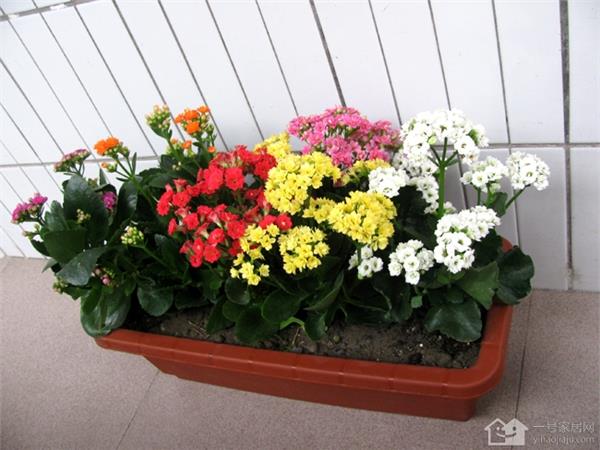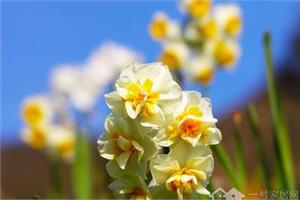Is the flower language of mandala suitable for keeping indoors?
Are longevity flowers poisonous? People who raise longevity flowers indoors will worry about this problem, because plants are poisonous, so are longevity flowers poisonous in the end? The following editor will give you a detailed answer so as to have a more comprehensive understanding of the characteristics and culture methods of longevity flowers.

Are longevity flowers poisonous?
Longevity flowers like plenty of sunshine, and family training should be placed in places with direct sunlight all the year round. In the northern hot summer season, the light intensity is large, which is easy to make the leaf color yellow, so it is appropriate to shade properly around noon, or put it in the half-shaded part of the room, but pay attention to ventilation and cooling. Long-term cultivation of longevity flowers, if the long-term lack of light, not only slender branches, leaves thin and small, affecting the plant shape beautiful, but also reduce the number of flowers, flowers are not bright, but also cause a large number of leaves to fall off, the loss of ornamental value.
The most suitable temperature for longevity flower growth is 20-25 ℃. More than 30 ℃ or less than 10 ℃, it obviously stopped growing and entered a dormant or semi-dormant state. In winter, if the temperature is lower than 10 ℃, move into the greenhouse to survive the winter. If there are conditions, the indoor temperature can be controlled at 16: 20 ℃ during the day and 10: 15 ℃ at night, so that longevity flowers can blossom on New year's Day and Spring Festival.
The room temperature in winter should not be lower than 12 ℃. It is better to use 15: 18 ℃ in daytime and more than 10 ℃ at night. If the temperature is as low as 6: 8 ℃, the leaves will turn red and the flowering period will be delayed.
Photosynthesis plays an important role in the improvement of furniture environment, and longevity flower as a green flowering plant, photosynthesis is naturally its nature. Moreover, the photosynthesis of longevity flowers is different from most plants, most plants only absorb oxygen and release carbon dioxide at night, so plants have a bad effect on the furniture environment at night. But the longevity flower is a CAM plant, which closes its stomata during the day and opens to release oxygen and absorb carbon dioxide at night, so the longevity flower has a good effect on purifying the air, especially at night, which can freshen the closed indoor air.
In addition, the longevity flower plant type is compact, the leaf is crystal clear and bright, the flower is dense and gorgeous, the florescence is long, and the florescence coincides with Christmas, New Year's Day and Spring Festival, the ornamental effect is excellent, so planting longevity flowers indoors can make the home environment full of vitality, especially in the bleak winter, used to decorate halls and rooms, showing more spring. Moreover, due to the festive meaning of the longevity flower itself, it can also add to the festive atmosphere of the winter festival, which is a lovely indoor potted plant.
Generally poisonous plants also refer to poisoning after eating, which is usually fine if you don't eat them. In addition, there are some aromatic plants indoors will cause us discomfort, but this is not poisonous. Longevity flowers absorb carbon dioxide, release oxygen, and have a strong role in purifying the air.
Longevity flowers are non-toxic and can absorb harmful gases and purify the air. Longevity flower is a CAM plant, which closes its stomata during the day and releases oxygen and absorbs carbon dioxide at night. Therefore, longevity flower has a good effect on purifying the air, especially at night, which can freshen the closed indoor air.
So longevity flowers are not only non-toxic, but also play a good role in purifying indoor air and beautifying the home environment, we can rest assured to buy and plant.
After the Beginning of Autumn, the longevity flower can see sunshine gradually from late August to early September, but it should see more sunshine from October to promote its transformation from vegetative growth to reproductive growth. When the lowest temperature drops to about 10 ℃, move indoors and place it in front of the south or west windowsill to make it more sunny. Keep 10 ℃ at night, 15 ℃ to 18 ℃ during the day, and blossom in December.
The above is the relevant introduction of this article, I believe you have a simple understanding of this after reading it, if necessary, you can continue to pay attention to the No. 1 home network for more information.
- Prev

What are the conditions and representative significance of cactus flowering?
What are the conditions and representative significance of cactus flowering?
- Next

Why don't daffodils blossom? the solution of non-flowering daffodils
Why don't daffodils blossom? the solution of non-flowering daffodils
Related
- Wuhan Hospital Iron Tree Blooming Result Was Instantly Frightened by the Gardener Master
- Which variety of camellia is the most fragrant and best? Which one do you like best?
- What is the small blue coat, the breeding methods and matters needing attention of the succulent plant
- Dormancy time and maintenance management of succulent plants during dormancy
- Minas succulent how to raise, Minas succulent plant pictures
- What are the varieties of winter succulent plants
- How to raise succulent plants in twelve rolls? let's take a look at some experience of breeding twelve rolls.
- Attention should be paid to water control for succulent plants during dormant period (winter and summer)
- Watering experience of twelve rolls of succulent plants
- Techniques for fertilizing succulent plants. An article will let you know how to fertilize succulent plants.

